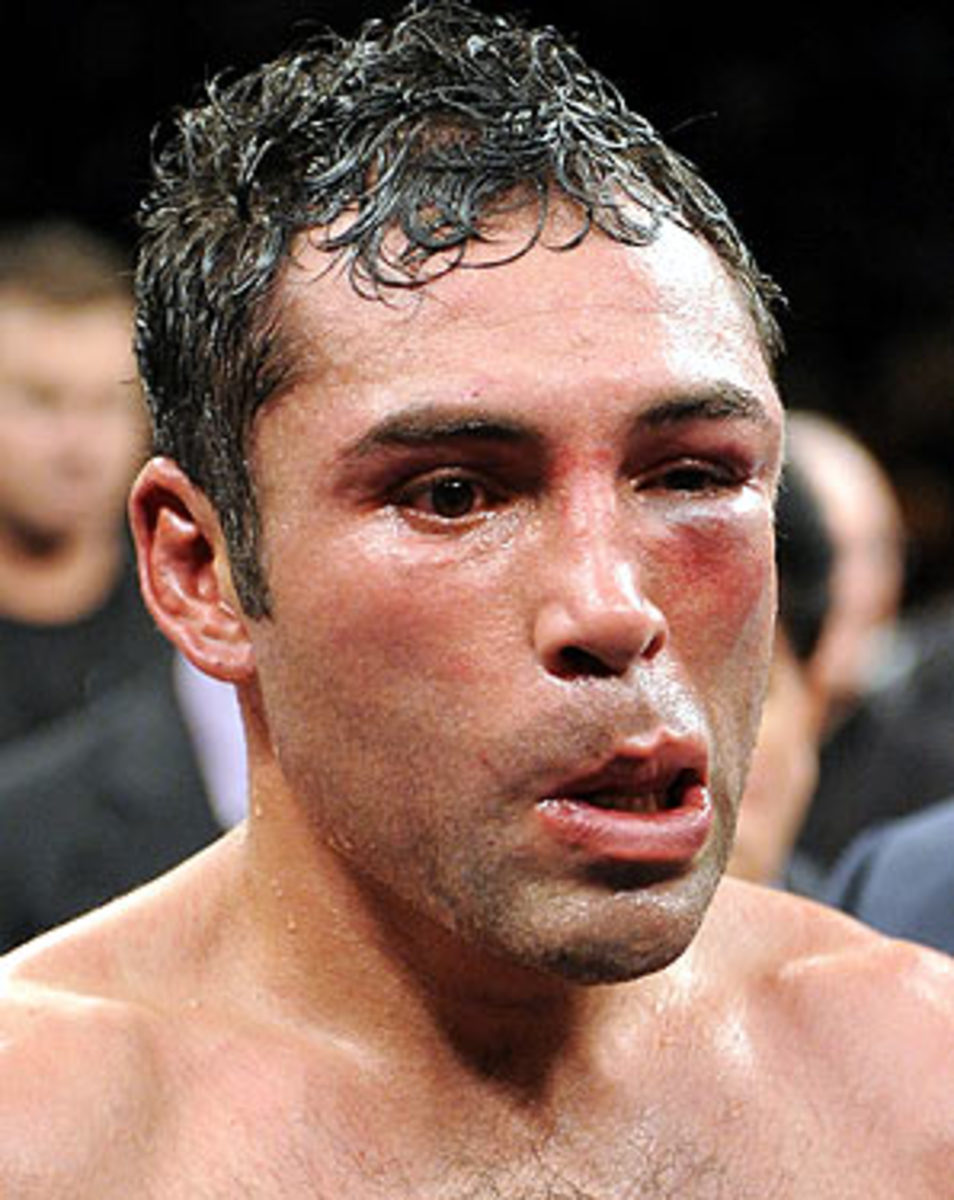
De La Hoya's next challenge awaits
As he sat inside an ambulance carrying Oscar De La Hoya from the MGM Grand last December, the concern for De La Hoya was written all over Richard Schaefer's face. Just moments earlier, Schaefer had witnessed De La Hoya, his business partner for the last eight years and the man who he helped build Golden Boy Promotions from the ground up, endure a savage, eight-round beating at the hands of Manny Pacquiao. It was the third of what Schaefer called "really bad fights" for De La Hoya, a string of events which began against Floyd Mayweather in May, 2007 ("he couldn't jab in that fight," said Schaefer), continued against Steve Forbes in May, 2008 ("he got hit more times than I have ever seen him get hit") and culminate against Pacquiao, a former lightweight champion who had jumped up two weight classes to face De La Hoya. As he stared at De La Hoya's reddened face and winced as he looked agonizingly at Oscar's closed left eye, Schaefer, as he has done so many times in the course of his relationship with De La Hoya, offered an opinion.
Maybe it was time to retire.
Five months later, De La Hoya heeded his partner's advice, announcing his retirement from boxing at the Nokia Plaza in Los Angeles, a stone's throw from the statue erected in his honor and just a few miles from where his boxing career began in East LA. De La Hoya walks away with one of the glitziest trophy cases in professional sports, highlighted by a gold medal in the 1992 Olympics and 10 world titles in six different weight classes. He beat the greats (Julio Cesar Chavez), was beaten by the greats (Shane Mosley, Bernard Hopkins, Felix Trinidad) and, in the end, leaves because he could no longer be great.
To those closest to him, De La Hoya made the right call.
"It was absolutely the right decision," said Schaefer. "It was time. His health is the most important thing. He doesn't need to be putting that at risk anymore."
While De La Hoya's retirement means that the tens of millions of dollars that are generated when he fights will no longer be flowing into Golden Boy Promotion's coffers, Schaefer said the subject of the business never came up in conversations he had with De La Hoya about his future.
"Golden Boy is not a young company anymore," said Schaefer. "We have a lot of great young fighters. And Oscar will still be there to promote them and do interviews about them. The difference is, this time when he talks it will be entirely about [other fighters] and not about his own career. He won't have to face the questions about who he will fight next or respond to some fighter calling him out."
The company is now De La Hoya's future. And his legacy. Certainly, people will remember De La Hoya for his epic, changing-of-the-Mexican-guard fight with Chavez and his slugfests with Mosley. They will remember him as a recession-proof Pay Per View draw (in 19 shows he generated $696.4 million in revenue) and for his Grammy nominated Latin pop album.
OK, maybe not the last one.
But Golden Boy Promotions was a groundbreaking endeavor. When De La Hoya formed the company in 2001 he became the first Hispanic to own a boxing promotion company. As his career continued, De La Hoya began hiring longtime rivals like Mosley and Hopkins as executives, empowering fighters in ways that had never been done before. While De La Hoya was always the primary breadwinner, his personal appeal and strong relationships with HBO quickly lured many of the top fighters to his company. In less than eight years, Golden Boy has established itself as one of the top promoters in the business.
And it will need him, now more than ever. While Golden Boy has some exciting young talents like junior welterweight Victor Ortiz and junior middleweight James Kirkland, the real money has streamed in from veterans like De La Hoya, Mosley and Hopkins. The simple truth is that Golden Boy hasn't needed its young fighters as long as the veterans were raking in the cash. But with De La Hoya now retired and the 44-year old Hopkins leaning in that direction, and with Mosley, 36, looking for three or four more fights before walking away himself, Golden Boy will need all of De La Hoya's influence with the networks and his charm with the press to build up his stable and keep the company strong into the next decade.
That won't be easy. And there is still the possibility that in a few months De La Hoya, his body healed and his spirits high, will get the itch to fight again. All fighters do. But De La Hoya's next fight is with Top Rank's Bob Arum and his future is in a suit. Only time will tell if he is any good in it.





